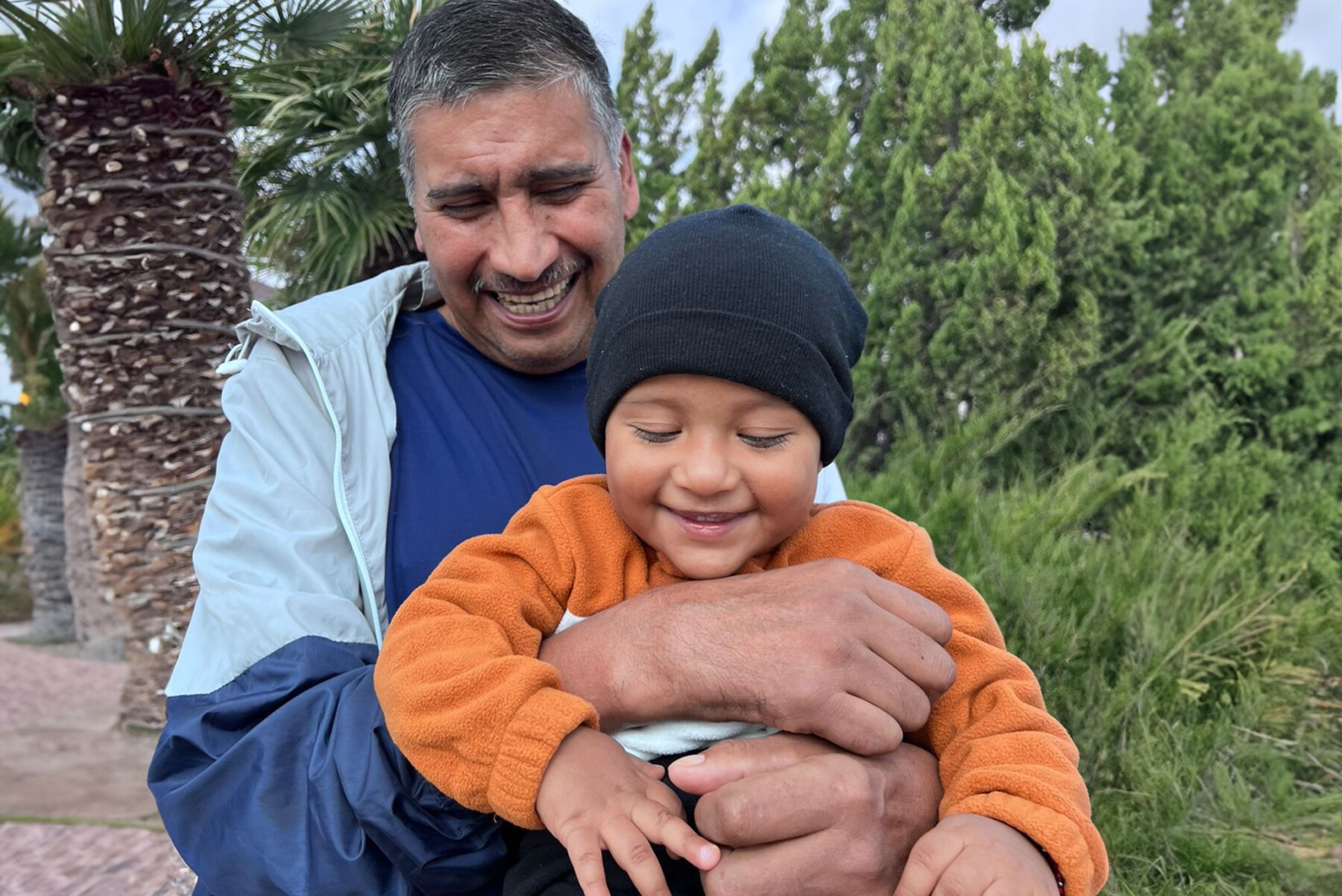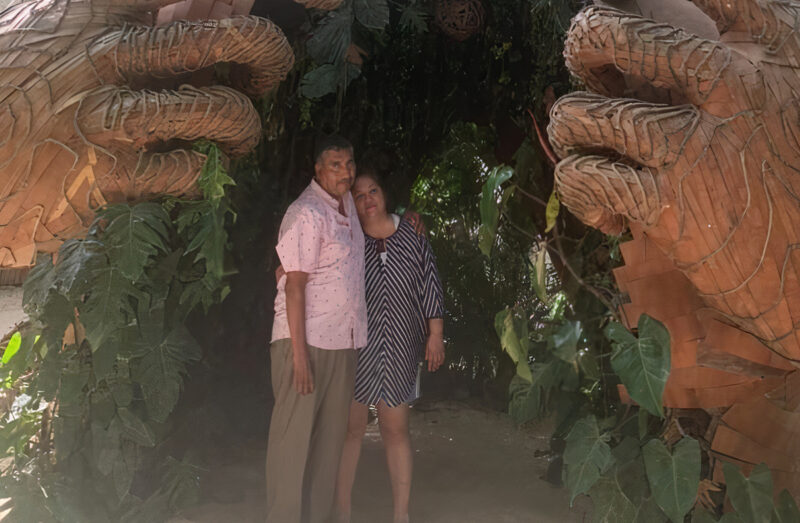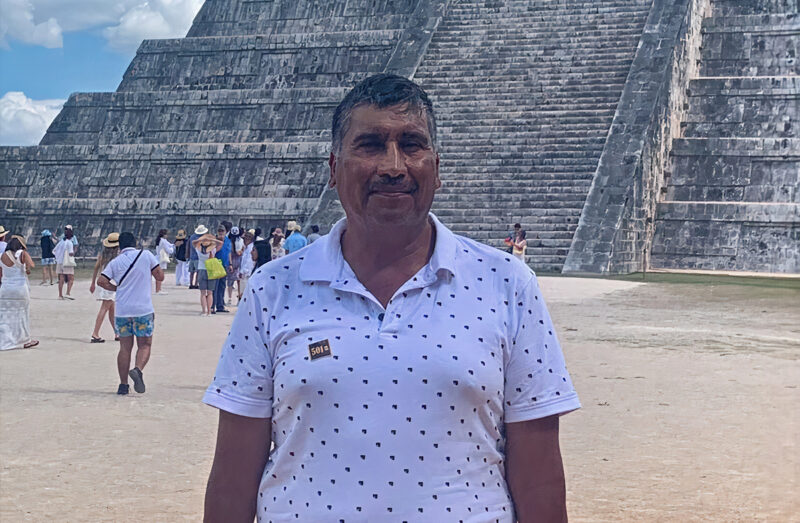My Treatment Journey From Mexico to the US
This is a sponsored post written by Francisco Ibarra in collaboration with TPA

This content is sponsored by Tanabe Pharma America, Inc. (TPA) and is intended for US audiences only. Any other present or future content posted by the contributor, not expressly designated as “Tanabe Pharma America, Inc. – sponsored content” is not associated with TPA.
Patient stories reflect the real-life experiences of persons diagnosed with ALS who have been prescribed RADICAVA ORS® (edaravone). However, individual experiences may vary. Patient stories are not necessarily representative of what another person using RADICAVA ORS® may experience.
These experiences are shared by patients and/or caregivers of patients on treatment at the time this content was created.
This is a real-life experience shared by an actual patient who is taking RADICAVA ORS®.
The information provided here is general in nature and is not intended to be a substitute for professional medical advice, diagnosis, or treatment. You are strongly encouraged to seek the advice of your doctor or other qualified healthcare provider with any questions regarding a medical condition.
Individual results may vary. Please see Important Safety Information below, full Prescribing Information, and Patient Information.
Growing up in Mexico
My name is Francisco, and I was born on April 4, 1968, in a small town near the city of Durango, Mexico. It was the same day Martin Luther King died. It wasn’t until later I learned of his legacy as a great champion. Learning from the challenges of others can give people strength to move forward. Maybe that’s why I’m sharing my story with you now. I’ve faced a lot of changes and challenges in my life before and after my ALS diagnosis.
In small-town Durango, most people worked in agriculture. The whole family planted and harvested fields, but my father was not a big fan of that work. He joined the Mexican Army and we moved to the city of La Paz in the state of Baja California Sur. Later, we moved to Coahuila where my parents worked in agriculture, and then we relocated back to Durango. Even at an early age, I was on the move.
I was a restless child and didn’t particularly like going to school. I generally didn’t get sick much, and I really enjoyed sports, especially track and field, running, and cycling.
Working in the US and Building a Family
When I was 15, my mother sent me to live with my father, who had moved to the US for work. I worked hard at jobs with his friends, and it paid off when I was 19 and I became a permanent US resident. At 22, I married Rocío, who is still my wife to this day, and we have two daughters. Back then, she didn’t want to live in the US or leave her job as a teacher. So, I worked 4 to 6 months at a time in the US and then spent a few months in Mexico with my family. I did this for years, working construction in California, and contracting with companies in other states doing agricultural work.
It was challenging spending so much time away from my family. I know I missed important moments in their lives. But when it came to spending time with them, I enjoyed the peace and tranquility I felt being home, and I knew all my sacrifices provided my family with better lives. Our daughters grew up, and my wife and I continued to overcome long distances by focusing on time together. For us, family is everything, and I’m happy to say I’m the grandfather of a beautiful boy named Franco.

Experiencing My First ALS Symptoms
In 2022, I was working at an agricultural job in Ohio. When I went back home, my family started noticing changes with me. I’d laugh for no reason, my speech began to slur, and I was clumsy and slow at times. My hands would shake, and sometimes I’d get very strong cramps all over my body. Food was falling out of my mouth without me realizing it. These things really upset my wife.
She took me to a specialist who ran blood tests, and I had an MRI brain scan. The doctor said everything looked fine, and it was probably fatigue or stress symptoms. Overall, I felt fine, and I wasn’t in any pain. However, my wife was still worried. So, she took me to a neurologist who ordered a cervical CT scan. He said I had attention-deficit/hyperactivity disorder (ADHD). But that didn’t explain all of my concerning symptoms.
Shortly after that, my boss asked me to take a contract in Kentucky. Back at work, I noticed a decrease in my hand coordination. I was losing strength, and my speech was getting slower. My wife asked me to return home, but I didn’t have the strength to walk. Thankfully, some folks on their way to Monterrey noticed my condition, helped me into their truck, and brought me back to Durango. At that point I was really scared, and I thought, “What’s happening to me?!”
Receiving My ALS Diagnosis
Once I was home, my wife took me to a neurologist again. The doctor asked to see the records from the previous tests but did not see anything serious, so I was sent to a neurophysiologist. By then, I was walking and speaking slower, and my arm strength was fading. At one point, the doctor asked me to stick out my tongue, and it was shocking to see how much it made me tremble. He reviewed the tests but said they were normal.
That’s when he told us that it could be amyotrophic lateral sclerosis (ALS). When I saw the look on the doctor’s face as he said “ALS,” I knew it wasn’t good news. He ordered a nerve conduction study, and while my wife and I waited for the results, I researched ALS. I realized it was the same disease Stephen Hawking suffered from. I was scared thinking about my body being affected like that.
Ultimately, they confirmed the ALS diagnosis. My wife remained so strong. She didn’t cry, but she lifted my spirits by staying at my side.
Traveling to the US for Treatment
After the diagnosis, the doctor prescribed medication. He said it may help slow the progression. I felt like he was already putting my life on the clock. The pharmacy in Mexico said the medication had to be imported from Germany. That made it difficult to get and it was too expensive for us. The doctor told us it would be easier to track it down in the US.
That’s when we decided to go for treatment in the States. This was challenging because we barely knew anything about the healthcare system there. We went to the Medical Center University in El Paso, Texas, to start the diagnosis process again. Deep down, I was hoping the previous diagnosis had been wrong. We had several consultations, and during one of our 12-hour trips back to Durango, the ALS diagnosis was unfortunately confirmed.
Eventually, we decided it was best for my treatment if my wife and I moved to the United States. We settled in El Paso, Texas. It was a challenging move for us, especially my wife, since she had to retire from her career to take care of me full time.
Facing the Diagnosis and Moving Forward
After the final diagnosis, fear, denial, desolation, and every emotion came rushing in. However, I always keep a positive mindset. Through the challenges we’ve faced in this fight, we received support on starting treatment and accessing resources that would help us cover our expenses. This allowed my wife to quit her job to be with me full time. She’s the one who’s always looking out for me.

We managed to access my social security and disability benefits and got approval for medications like RADICAVA ORS® (edaravone). My doctor said it may help slow the loss of function caused by ALS, so I make sure to take my medication as scheduled. I receive physical, occupational, and speech therapy. I have learned to communicate using a tablet, attend all my appointments on time, and follow all instructions. There’s no patient more obedient than me.
I have faced challenges throughout my entire life, but I am a warrior. I’ve always persevered thanks to my family. They are always with me, and this is just another fight we’re taking on together.
In the clinical study, RADICAVA® (edaravone) slowed the loss of physical function as measured by the ALS Functional Rating Scale–Revised (ALSFRS-R) by 33% versus placebo. At 24 weeks (about 6 months), patients who did not receive RADICAVA® (66 patients) declined more rapidly in physical function, having lost an average of 2.49 points more than those who received RADICAVA® (68 patients). Common side effects reported include bruising (contusion), problems walking (gait disturbance), headache and fatigue. These are not all the possible side effects of RADICAVA ORS. Talk to your doctor about all the benefits and risks associated with treatment.
Learn more about ALS and how RADICAVA ORS® may help you.
Learn more about participating in the Share Your Story program at ShareYourALSStory.com.
INDICATION
RADICAVA ORS® (edaravone) is indicated for the treatment of amyotrophic lateral sclerosis (ALS).
IMPORTANT SAFETY INFORMATION
Do not receive RADICAVA ORS® (edaravone) if you are allergic to edaravone or any of the ingredients in RADICAVA ORS.
Before you take RADICAVA ORS, tell your healthcare provider about all of your medical conditions, including if you:
- have asthma.
- are allergic to other medicines.
- are pregnant or plan to become pregnant. It is not known if RADICAVA ORS will harm your unborn baby.
- are breastfeeding or plan to breastfeed. It is not known if RADICAVA ORS passes into your breastmilk. You and your healthcare provider should decide if you will receive RADICAVA ORS or breastfeed.
Tell your healthcare provider about all the medicines you take, including prescription and over-the- counter medicines, vitamins, and herbal supplements.
What are the possible side effects of RADICAVA ORS?
RADICAVA ORS may cause serious side effects, including hypersensitivity (allergic) reactions and sulfite allergic reactions.
- Hypersensitivity reactions have happened in people taking RADICAVA ORS and can happen after your medicine has been taken.
- RADICAVA ORS contains sodium bisulfite, a sulfite that may cause a type of allergic reaction that can be serious and life-threatening. Sodium bisulfite can also cause less severe asthma episodes in certain people. Sulfite sensitivity can happen more often in people who have asthma than in people who do not have asthma.
- Tell your healthcare provider right away or go to the nearest emergency room if you have any of the following symptoms: hives; swelling of the lips, tongue, or face; fainting; breathing problems; wheezing; trouble swallowing; dizziness; itching; or an asthma attack (in people with asthma).
Your healthcare provider will monitor you during treatment to watch for signs and symptoms of all the serious side effects and allergic reactions.
Common side effects reported include bruising (contusion), problems walking (gait disturbance), headache and fatigue. These are not all the possible side effects of RADICAVA ORS.
Call your doctor for medical advice about side effects. You may report side effects to FDA at 1-800-FDA-1088. You may also report side effects to www.fda.gov/medwatch or Tanabe Pharma America, Inc. at 1-888-292-0058.
Please see the full Prescribing Information and Patient Information, also available at www.radicavaors.com.
RADICAVA and RADICAVA ORS are registered trademarks of K.K. BCJ-94.
Intended for US Residents Only.
© 2025 Tanabe Pharma America, Inc. All rights reserved.
CP-OE-US-1352 12/25






